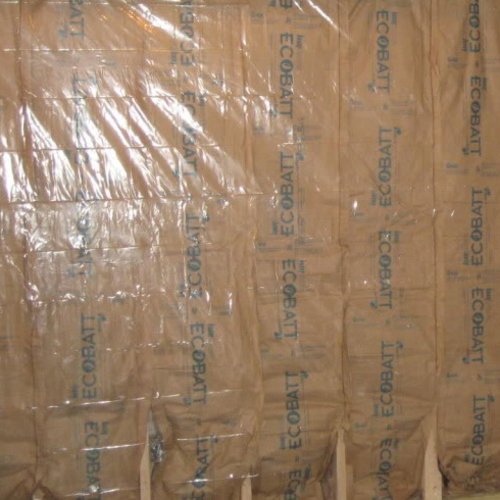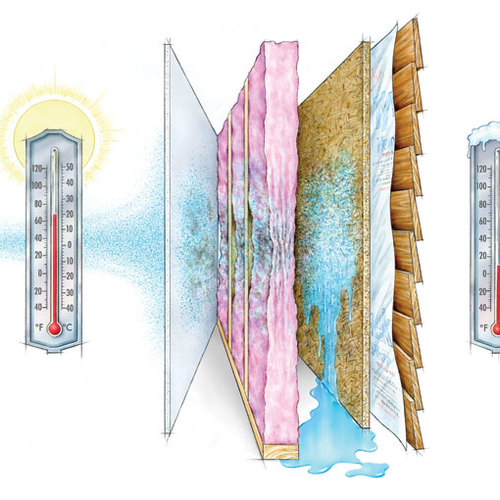
When you combine solid construction methods with an understanding of basic building-science concepts, you have the potential for a well-built home. Here at GBA, we have published many prescriptive articles on moisture management to maximize the drying potential of exterior walls. This article delves into the chemistry and physics of how exterior walls respond to water vapor—so you’ll know, like a pro.
What is drying potential and how do we achieve it?
The term “drying potential” denotes the extent to which a material or building assembly permits evaporation. The rate of evaporation depends on the porosity of the material, and we measure this in perms. Perms refer to permeation rate; various materials of different porosity have a range of perm rates. You’ll find some of these described in the building code using the Roman numerals I, II, and III for the least to the most porous vapor retarders. Bottom line: The higher the perms rate, the greater the drying potential.
In a building assembly, the materials used on exterior walls must balance the evaporation rate—or drying potential—against the rate at which the material’s porosity will also permit moisture infiltration. In other words, the ideal material allows water vapor to exit the wall but not enter.
Since one-way holes don’t exist, we rely on thermodynamics—or the movement of air (and hence airborne moisture)—to travel from warm to cold. Based on this natural transportation process, we place the higher-perm-rated materials on the cold side of the wall. Depending on the climate zone, exterior water-resistive barriers (WRBs) and interior vapor barriers can work together to keep walls dry.
One additional option comes with exterior foam insulation that reduces the temperature difference between interior and outer wall surfaces to avoid water vapor from condensing within…
Weekly Newsletter
Get building science and energy efficiency advice, plus special offers, in your inbox.

This article is only available to GBA Prime Members
Sign up for a free trial and get instant access to this article as well as GBA’s complete library of premium articles and construction details.
Start Free TrialAlready a member? Log in















3 Comments
In the article your reference to exterior continuous insulation is always "foam" but it could just as well be wood fiberboard insulation--as long as it's enough to meet the required R-value, it's a much lower carbon product that allows moisture diffusion as well. I know foam is more known and readily available, but fiberboard like Steico and Gutex are becoming easier to get.
Fiberboard is going to get very interesting next year when it's being produced in the US. For my current build it was still at leat 2x Rockwool.
Indeed, and other products, too. Code only references foam, and, as you say, it's the most popular option. Thanks for reading, and the correct observation.
Log in or become a member to post a comment.
Sign up Log in